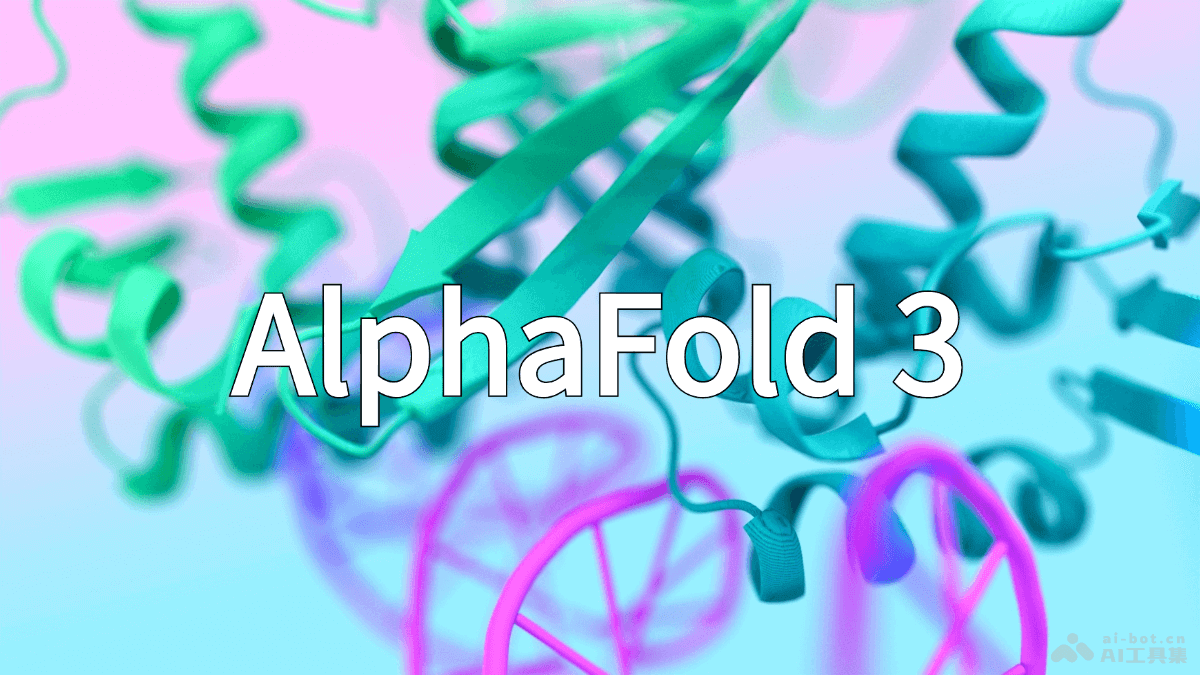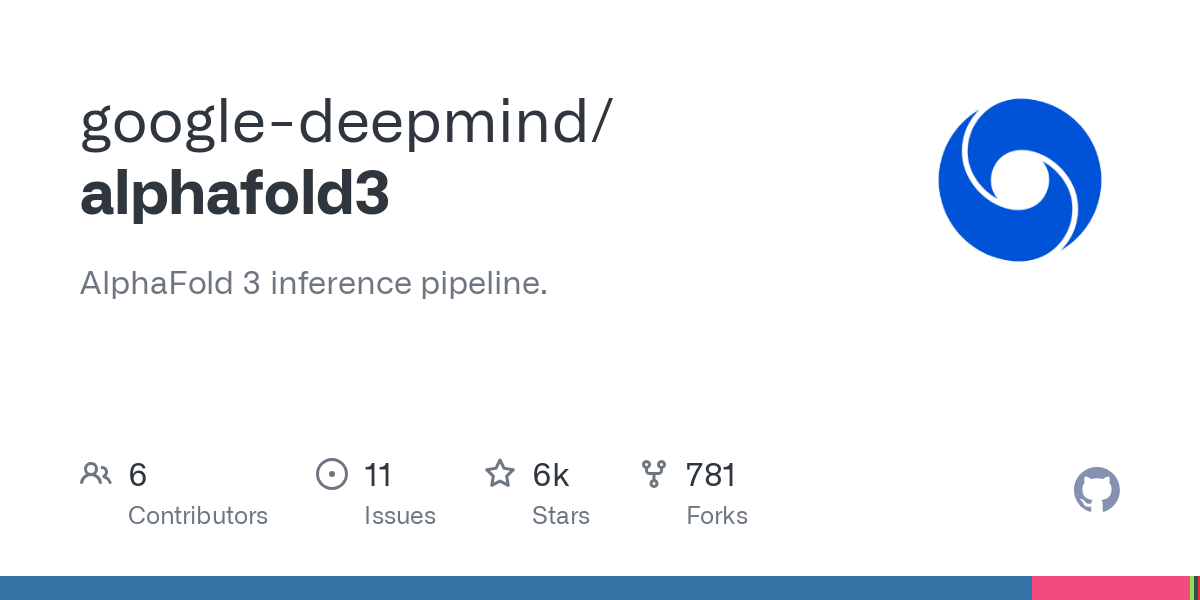AlphaFold3
by Google DeepMindAlphaFold 3 is an AI model by Google DeepMind that predicts the 3D structures of biomolecules, revolutionizing structural prediction accuracy.
What is AlphaFold 3?
AlphaFold 3 is an AI model developed by Google DeepMind that predicts the 3D structures of various biomolecules, including proteins, nucleic acids (DNA and RNA), small molecules, ions, and modified residues. The model has achieved revolutionary progress in the accuracy of structural predictions, significantly impacting drug design, scientific research, and biomedical fields. Being open-source, AlphaFold 3 enables global scientists to accelerate the development of new drugs and vaccines.
Key Features of AlphaFold 3
- Structural Prediction: AlphaFold 3 can predict the 3D structures of almost all molecule types found in the Protein Data Bank (PDB), including proteins, nucleic acids, small molecules, ions, and modified residues.
- Drug Development: It helps researchers quickly screen potential drug targets by predicting the structure of target proteins, revealing possible active sites and binding pockets, and providing a crucial structural basis for drug design.
- Molecular Interactions: AlphaFold 3 can predict the binding patterns of drug molecules to target proteins, assess the affinity and specificity of drug molecules, and guide chemists in molecular optimization.
- Biomolecular Complexes: AlphaFold 3 can handle biomolecular complexes with numerous residues and various molecular components, effectively integrating information from proteins and nucleic acids to build 3D structural models of entire complexes.
Technical Principles of AlphaFold 3
- Deep Learning Framework: AlphaFold 3 is based on a deep learning framework trained with extensive biomolecular structure data to learn key features of molecular interactions.
- Pairformer Module: The Pairformer module replaces the previous Evoformer module, reducing the processing load of multiple sequence alignments (MSA) and allowing the model to focus more on molecular interactions.
- Diffusion Module: AlphaFold 3 introduces a diffusion module that directly predicts atomic coordinates, simplifying the model architecture and avoiding reliance on complex rules, enabling it to handle various types of biomolecules.
- Cross-Distillation Technique: AlphaFold 3 uses cross-distillation techniques, training on large-scale pseudo-label data generated by high-performance models to enhance the model's robustness and generalization capabilities.
- Generative Adversarial Networks (GAN): The training process of AlphaFold 3 involves the concept of generative adversarial networks (GAN), using adversarial training to improve the model's prediction accuracy.
Project Links for AlphaFold 3
- GitHub Repository: https://github.com/google-deepmind/alphafold3
- Technical Paper: https://www.nature.com/articles/s41586-024-07487-w
Applications of AlphaFold 3
- Drug Design: Predicting protein structures to identify potential drug targets and guiding the design and optimization of drug molecules based on predicted binding patterns.
- Vaccine Development: Predicting the antigen structures of viruses or bacteria to design effective vaccines.
- Basic Research: Revealing protein functions and mechanisms based on structural predictions and studying protein-protein and protein-nucleic acid interactions.
- Disease Research: Investigating structural changes in proteins related to diseases and identifying disease-related proteins to provide new therapeutic targets.
- Agricultural Biotechnology: Studying plant protein structures to develop transgenic crops resistant to pests and diseases.
Model Capabilities
Model Type
multimodal
Supported Tasks
Structural Prediction
Drug Development
Molecular Interactions
Biomolecular Complexes
Tags
AI
Biomolecular Structure
Drug Design
Open Source
Structural Prediction
Deep Learning
Protein Folding
Scientific Research
Biomedical Applications
Molecular Interactions
Usage & Integration
Pricing
free
License
Open Source
View license
Screenshots & Images
Primary Screenshot

Additional Images

